Case 1
Figure 1
Chest X-ray (postero-anterior), which shows an opacity in the left hemithorax, at the lower lung field.
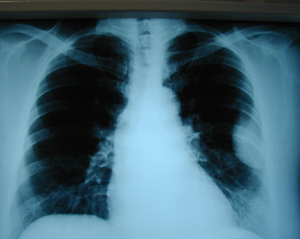
Case 1
Figure 2
Chest CT scan which shows a tumour mass at the lower lobe, with smooth borders and with no calcification.

Case 1
Figure 3
Postoperative chest X-ray after the resection of the lung mass through a mini thoracotomy. The final histology examination showed a rare lung tumour
(sclerosing haemangioma).
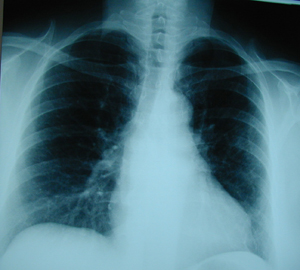
Case 1
Figure 4
Photograph of the surgical specimen, represents the resected tumour, which was removed by means of a wedge resection.
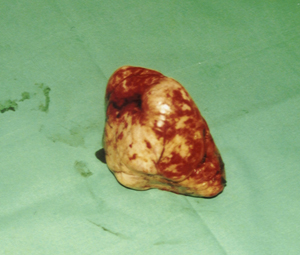
Case 2
Figure 1
Postero-anterior chest X-ray. There is a huge mass which occupy the right upper and middle lung fields.

Case 2
Figure 2
Lateral chest X-ray. There is a huge mass in the upper lung field.
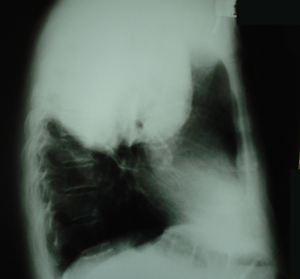
Case 2
Figure 3a-d
Chest CT scans at different levels. It shows a huge tumour mass with some necrosis, that displaces the mediastinum, to the left side, without any sign of invasion of the large vessels. This mass seems to have smooth borders.
A-B
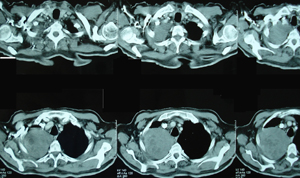
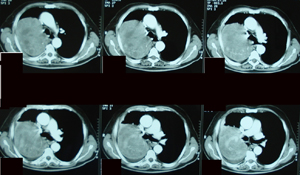
C-D
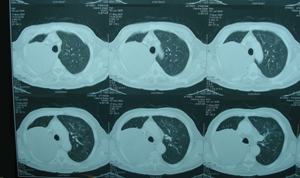
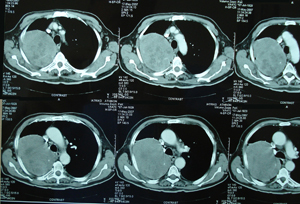
Case 2
Figure 4.
Postoperative, Postero-anterior chest X-ray. A right upper and middle lobectomy was performed, through a right anterior thoracotomy and median sternotomy. There is a complete expansion of the remaining right lower lobe.
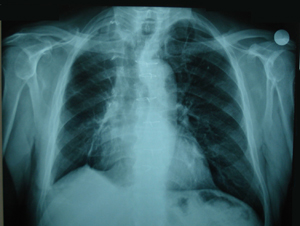
Case 2
Figure 5
Postoperative lateral chest X-ray, after a right thoracotomy and median sternotomy. Normal postoperative image.
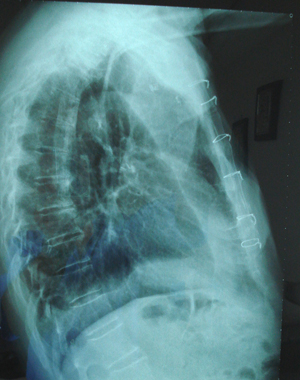
Case 2
Figure 6.
Surgical specimen photograph, which shows the right upper lobe, the middle
lobe with the huge tumour. The tumour dimensions were 17,5 x 15 x 11,5 cm.
and the histology examination of the specimen revealed a very rare tumour
which was an intrapulmonary solitary fibrous tumour.
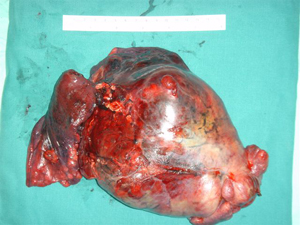
Top